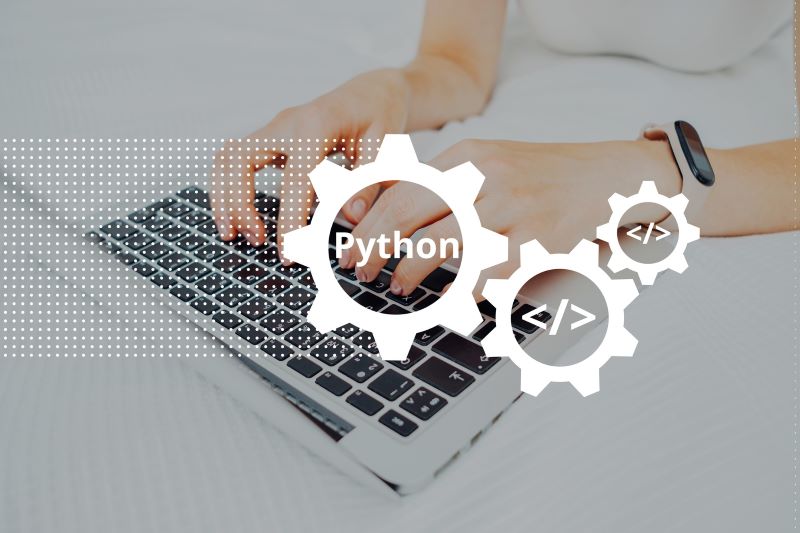Advanced Web Scraping in Python: Techniques, Tools, and Best Practices
Web scraping is the process of capturing data from websites to make informed decisions or monitor key data. It is used in e-commerce management, data science, and even to boost your SEO. However, web scraping in its simplest form is complex and time-consuming, requiring you to write code for every bit of information you hope to extract. With advanced web scraping Python strategies, like those listed here, it is possible to do more with less time involved.
Table of Contents
To help you get started, we created a guide that provides access to some of the most sophisticated tasks and techniques available to handle more complex data extraction methods. If you have not done so already, it’s always a good idea to start out with some insight into how to use Python for web scraping. Once you are ready to get started, consider the following appropriate for advanced web scraping with Python.
Why Use Python for Advanced Web Scraping?

For many developers, Python is a go-to solution for numerous reasons. It is simple to write. It is versatile and can be used for a wide range of applications. Even better, there are numerous libraries that are already established that allow you to get started even faster. When you combine Python with the tools and more advanced strategies we offer here, you’ll be able to get more done faster.
Python allows you to:
- Write code that will help you navigate to the desired target websites
- Extract the specific information and data you need
- Process that information in a way that is desirable for your project
- Help you get around anti-web scraping tools and blocks out there
- Adapt to AI and automated strategies that can speed up the process even more so
Several Python libraries can provide you with the tools necessary to start web scraping quickly. Some of the most common we have built tutorials and how-to articles on for you include:
- BeautifulSoup, which is the ideal choice for parsing HTML as well as XML
- Requests is another excellent library because it makes it very simple to make requests
- Selenium is an excellent choice because it automates a variety of tasks and browser interactions, which will give you more advanced strategies to get around the JavaScript that is present on some sites.
- Scrapy is another important library, and often we recommend Scrapy for web scraping because it is such a fully-featured framework with asynchronous scraping and more advanced scraping requests.
- Asyncio is a library that allows you to write concurrent code. This is done using the async/await syntax, and it is a critical foundational tool for various Python asynchronous frameworks
As you work to build a tool, take the time to consider these tools. Our web scraping tool tutorial can help you see and compare their differences
Key Strategies to Help You with Python Advanced Web Scraping

You already know the basics of how to use many of these tools – but let’s provide you with a breakdown of an approach that will help you to achieve what you desire with more seamless integration
Dynamic Content Solutions: One of the more challenging tasks in today’s real-world applications of web scraping is encountering websites that require action. These websites load through JavaScript, which means the client-side scripts are used to fetch and display data only after the page is rendered. This makes using traditional scraping difficult
To overcome this challenge, use Selenium or use Scrapy with Splash. Selenium is often a go-to recommendation from our team because it is a browser automation tool that will allow you to load and interact with web pages in much the same way as a standard person would – meaning you do not seem like a robot doing the work
To do this, use the following code from the Selenium imported web driver
driver = webdriver.Chrome() # or any other browser driver
driver.get(‘https://example.com’)
# Example for infinite scroll
while True:
driver.execute_script(“window.scrollTo(0, document.body.scrollHeight);”)
# Insert delay to allow new content to load
time.sleep(2)
if no_more_content: # Implement your condition for when to stop scrolling
break
Alternatively, you can pair Scrapy with Splash, which is a headless browser that will scrape JavaScript content for you. Advanced web scraping with Python using Scrapy and Splash can be a very effective solution. Splash will help by rendering web pages and then executing JavaScript. It can then provide final HTML content so that Scrapy can then go to work parsing it. To help you see how this might work, consider the following example code:
import scrapy
from scrapy_splash import SplashRequest
class DynamicSpider(scrapy.Spider):
name = ‘dynamic_spider’
def start_requests(self):
yield SplashRequest(‘https://example.com’, self.parse, args={‘wait’: 2})
def parse(self, response):
# Extract data from the rendered page
pass
Advanced Web Scraping with Python Strategies We Recommend

Now that you have the basics of how to overcome the most common challenges, here are some of our tips for advanced web scraping with Python that can help you overcome other challenges.
Rotating Proxies: Using a proxy service is always a recommendation we have because it works to protect your identity and creates smooth sailing when it comes to delivering accurate scraping results. Proxies act as a middle-step in the process, blocking your IP address from the target website. You have a lot of proxy options to choose from, but for many projects, the use of rotating proxies simply makes the best sense.
Rotating proxies for web scraping allows you to use a different IP address throughout the process. That means every time you visit the website, you are not using the same IP address. Since many websites today have anti-bot tools in place that will detect your IP address and block it when you are requesting a great deal of data, rotating proxies offer a solution. They see each of your visits as a different IP address, which means there’s less overall risk of being blocked.
Managing CAPTCHA: One of those anti-bot blocking tools that we often see is the use of CAPTCHA. It’s a small set of letters and numbers or other details that must be answered correctly in order for the visitor to gain access to the site. One of the best ways toa chieve this is to use AI to help you. Natural language processing (NLP) models allow AI to help you understand what is being said and will automatically update that information for you
Intelligent Throttling: Sometimes called smart throttling, this is the process of using AI to help you optimize the process. It is necessary because of rate limiting, a process that will control the number of requests a specific IP address makes within a set timeframe. That holds back web scrapers and limits your overall ability to capture the information you need. To overcome this problem, we recommend the use of proxies, as mentioned. You can also use AI tools to help you overcome these challenges
Python for Advanced Web Scraping

Advanced web scraping Python strategies solve your biggest problems and provide you with exceptional access to the information you need. When we combine Python’s libraries, like those mentioned here, you gain several benefits, including data storage and analysis that allow you to pull all of the information you need to use in a meaningful way. With advanced web scraping, there is far more opportunity for your web scraping tasks to achieve your goals, including the potential to extract, process, and utilize web data in an efficient manner.
We always recommend using web scraping for only ethical and legal tasks, and we recommend that you always apply web scraping and proxy use based on what is required on the website’s terms and conditions.
The key to success in this process is to act as a real user as much as possible. That is why we recommend using rotating proxies to help you seem like a routine person visiting a site. We also encourage you to use Selenium to improve efficiencies
How Scraping Robot Helps You With Python Advanced Web Scraping

You can use any of the tools and tutorials we offer to help you get started with web scraping and using Python. When you combine that with the advanced web scraping Python solutions we mentioned here, you can really skyrocket what you are achieving.
To make it even easier for you to get started, we recommend using the Scraping Robot API. As an API, it is the fastest and simplest way to get started, and it allows those who have experience and those who do not to easily start applying advanced strategies to capture and implement web scraping.
With Scraping Robot and our API along with the use of rotating proxies, it is easier than ever for you to capture the information you need to make informed decisions.
The information contained within this article, including information posted by official staff, guest-submitted material, message board postings, or other third-party material is presented solely for the purposes of education and furtherance of the knowledge of the reader. All trademarks used in this publication are hereby acknowledged as the property of their respective owners.
